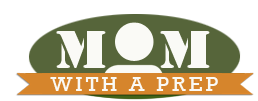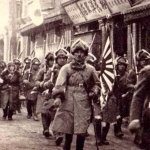

Besides being able to kiss a boo-boo away, and put a band-aid on an ouchie – what first aid skills do you really have?
If an emergency arose, would we be able to help out, or would you wait hoping that an ambulance or someone with skills gets there in time? Not all preparedness is about collecting stuff. It’s also about learning skills to take care of our families and community during crisis.
Each of us should make these skills a priority to learn. Of course downloading an app like the Red Cross First Aid app is a good idea too!
Awhile back, I shared how I was heavily influenced in my early days of wanting to become a more prepared family, by Lisa Bedford’s “The Survival Mom”. Her list of first aid skills every mom should know was eye-opening.
But since then, I’ve decided there are more skills than she even had listed that a parent should know. Before we start, I’m not a medical professional, nor do I play one on television. I’m not going to teach you how to do these skills (again, I’m not a medical professional).
I will provide sources for you to gather additional information for yourself.
10 First Aid Skills for parents
1. CPR for children and infants
CPR training has changed in the last few years. The 3 hard puffs + 5 presses are no longer the recommended CPR tactics. Because the needs of an infant who is in respiratory distress are much different than that of an older child or an adult, be sure that you get trained in how to handle the infant as well.
Take a class from the Red Cross or find local community seminars that may be available.
2. Heimlich Maneuver / abdominal compressions
Choking in small children is an everyday occurrence, but do you know when intervention is mandatory?
Do you know the signs of choking as well as how to perform this lifesaving skill? And do you do it differently for an infant vs. an older child? *Since taking a CPR/First Aid class this month, I learned that it is no longer called the Heimlich Maneuver, but now is known as Abdominal Compressions.
Learn how to perform techniques that help with choking.
3. How to Clean and Dress a Wound
Back in our early days, my husband cut his shin while mowing the lawn. We didn’t know that’s what it was at first, but it seemed like just a cut gone a little wrong. It was a jagged wound and little did we know that a treatment of hydrogen peroxide that we’d always used on cuts was actually bad for a cut like this one.
We’ve since learned better, and have brushed up on the care and keeping of all sorts of wounds to be sure we’re giving ourselves the best leg up to fight infection and promote good healing. And make sure you have a good first aid kit with you wherever you are, just in case.
4. How to Treat Diarrhea
Dehydration from diarrhea and vomiting are some of the quickest ways a child can end up in the hospital. Being sure to understand when to give fluids, when to stop, and how to feed during times of severe intestinal issues is the job of a parent.
Being familiar with the BRAT diet, re-hydration with the correct kinds of fluids, and watching for signs of dehydration and taking the next step are easy things for you to master.
5. How to Treat & Wrap a Sprain
Is it heat or cold? Do I wrap tightly or wrap up to the knee? Knowing how to properly wrap (when to wrap and what to use), and how to treat can save your child pain and further injury until you can get medical help.
Remember to use the R.I.C.E. Method correctly to treat sprains and strains (Rest, Ice, Compression, Elevation).
6. How to Splint a Broken Bone
Just like with sprains, knowing how to splint and treat a broken bone until you can get further help can save further damage. One thing to remember, if you don’t see evidence of lack of blood flow, it’s better not to try to reset a bone yourself, just stabilize until you’re able to get further medical help. Make sure you have good supplies on-hand.
7. How to Treat a Burn
Burns need special kinds of care. Can you tell the difference between a first and third degree sunburn? Was that touch on a hot stove enough to necessitate a visit to the hospital? Do you carry anything that can help treat a burn on the go?
Learn more about the classification and treatment of burns here.
8. How to Stop Severe Bleeding
Severe bleeding doesn’t have to be restricted to severe injuries or trauma. In some people, even a simple nose bleed can become severe, especially if they are on blood-thinning agents or have hemophilia. Simple head lacerations can produce an extraordinary amount of blood for a simple cut.
9. How to Treat Shock
Shock is a life-threatening condition that occurs when the body is not getting enough blood flow. This can damage multiple organs. Shock requires immediate medical treatment and can get worse very rapidly. Treating for shockcan help save a life of somone who might not otherwise die from the basic injuries.
How to recognize, get help for and provide first aid for shock.
10. When to Intervene (Triage)
Knowing when to take care of something yourself, when to seek the assistance of a doctor, or when to call for 9-11 is hard for parents. It can be hard to separate the emotion from the situation and know how to proceed from it seeming a simple cold that just doesn’t go away to the need for intervention because it really is pneumonia.
You might also find yourself in a situation where you have more than one to care for (i.e., car wreck) and need to know how to triage the situation to give help to who needs it most, and who to just maintain until help arrives because intervention might be worse.
This doesn’t mean that you need to take a special First Responder course load. You don’t have to be an EMT to learn basic first aid skills to make yourself better able to help those around you. Be mindful of those things that you CAN do and get trained, read up, watch videos, gain an understand of the level of preparedness for these situations that it would be wise to know as a parent. Besides, it might just help save a life!
If you ARE interested in taking a first aid class, you should check out The Patriot Nurse’s Medical Prep 101 & 102 classes. She travels the country teaching preparedness-minded folks about first aid and medical care. Here are a few good selections for the well-prepared parent:


